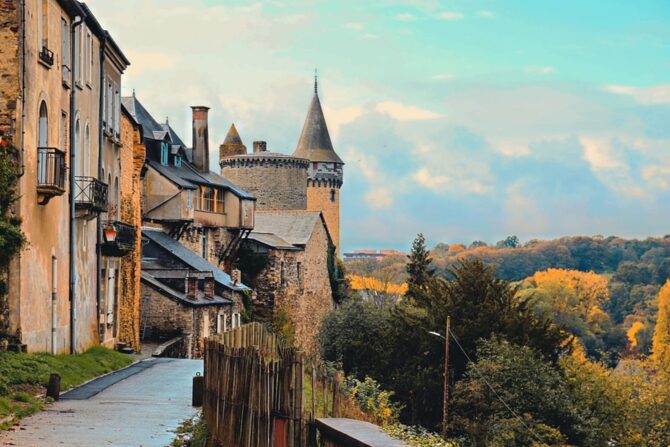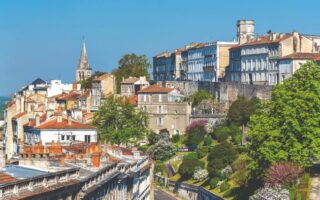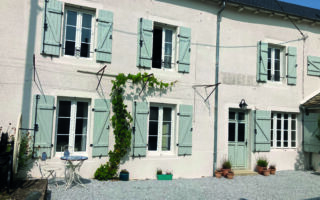French Property Location Guide: Brittany
With its extensive and varied coastline, lush countryside, rich history and culinary delights, Brittany has a big personality that’s not to be missed, says Joanna Leggett…
Brittany sometimes feels like a separate world – a long and rugged coastline almost surrounds it, while inland its beautiful countryside with rich, rolling pastures is dotted with woods and full of ancient history. Brittany enchants – it even has its own language unique t this wonderful part of northwestern France.
‘Bretagne’ in France, ‘Breizh’ in the Breton language, it’s even sometimes called ‘Little Britain’ perhaps in part due to the numbers of Celts who made their own much earlier ‘escape’ to rural France to avoid the Saxons invading England. They brought with them their Celtic language and skills.
Before this, the Romans called the region ‘Armorica’ during their occupation; after they left, Brittany became an independent kingdom, then a Duchy before it was united with the rest of France. The peninsula juts out into the Atlantic, bordering the southern reaches of La Manche (the English Channel), and the region has retained its own strong identity. For centuries, life here has been ruled by seasons and the sea – skilled sailors and fisherman were required to navigate the massive tides that roar along the coast, and rocky outcrops form bastions around delightful hidden coves.
PIRATE HAVEN
St-Malo was once the haunt of pirates ready to sail off to heaven knows where and perform all sorts of dastardly deeds. Lorient and Brest became major ports, and the city of Rennes is its capital – the smallest place in the world to have its own metro line when it first opened some 20 years ago and airport. Erquy on the northern coast, on the Golfe de St-Malo, is the home of Asterix, the famous cartoon character from books loved by children and their parents since 1959.
At every turn there are reminders of the past, every town or village has its own Celtic, Breton or prehistoric remains: an isolated chapel here, a hidden statue there. It’s so remote from the outside world that paganism endured here until the 9th century.
After the Romans left, it became three independent kingdoms, uniting as one in around the 9th century. Brittany, it seems, was all- powerful and at one stage even governed the Channel Islands.
The Vikings invaded too but they were kicked out by Alan II of Brittany who recreated a strong Breton state, paying allegiance to Louis IV who had helped him in his unification quest, which in turn led to Brittany becoming a duchy. Indeed, Bretons formed a third of William the Conqueror’s invasion army and some of its lords helped to ‘liberate’ the Cornish peninsula.
TWO BECOME ONE
Brittany was eventually subsumed into France by the marriage of Duchess Anne of Brittany to Louis XII. She had endeavoured to keep her country independent, but Francis I combined the two countries in the 16th century, although each was governed as a separate entity under the same crown for the remainder of the ancien regime. Amazingly, Breton aristocrats in the French royal court were always classed as foreign princes. I guess you could say Napoleon changed that too
With its strategic position on the northwest coast, peopled with skilled sailors and doubtless men with no small ambition, Brittany greatly benefited from the creation of the French colonial empire.
Seaports like Brest expanded, becoming a major base for the French navy who still wear their distinctive matelot dark blue and white striped jerseys – leading to a fashionable trade that continues to this day. Most of us seem to have at least one in our wardrobe.
Generations of seafarers harvested bounty from its little fishing ports, many of which are clustered around narrow inlets or bays. Each will undoubtedly have a bar oг two with a restaurant featuring ‘catch of the day’ perhaps a plateau de fruits de mer to make a real celebration of an evening meal with friends.
Inland, Breton villages ooze with charm, and clusters of whitewashed stone cottages appear to be safely anchored into the earth by their granite roofs. Local markets sell the freshest of produce with mind- boggling displays of seafood. Pick up a fresh seabass, stuff with fennel then encase it in local salt harvested on the Guérande peninsula and cook in a hot oven for 20 minutes.
One of my favourite markets is Dinan, the walled medieval town inland from St-Malo, where you will find an amazing variety of local produce on Thursdays – what better way to pass your morning?
MOUTHWATERING FARE
Sardines are also caught along the coast here – they’re great thrown onto a hot grill and from there onto your plate. It would be rude not to talk about lobster and oysters from Cancale (another great market), as well as Breton cider… the list of luscious temptation goes on.
I almost forgot to mention sole meunière, named after some obscure miller’s wife who floured fish before cooking in the days before non-stick pans. Fresh sole adorned with butter and lemon sauce is enough to make anyone’s mouth water.
While we’re on one of my favourite subjects-food-let’s. not forget galettes. These thick pancakes made with buckwheat flour are part of Breton folklore especially when consumed with local cider. Filled with chocolate and fruit, sometimes flambéed in local liqueur, or as succulent savoury numbers with ham and mushrooms, they’re famed in French gastronomy. In southern Brittany, crêpes are made with wheat flour and are thinner and crispier – of course, it’s very important to sample both!
FANTASY ISLANDS
The Parc Naturel Régional d’Armorique starts at the Pointe de Pen Hir south of Brest and offers wonderful walks, as well as lovely hotels to stay in while you’re exploring.
Offshore on this western coast are some beautiful islands such as Belle Ile (it’s all in the name). Reached by a 45-minute car ferry ride from Quiberon, its pretty villages include one called Bangor, named by Welsh shepherds during British occupation in the 18th century. I found out recently it became French again in exchange for Nova Scotia in Canada.
Another bonus to owning a permanent or holiday home here is accessibility, with the TGV at Rennes and easy connections to Paris, direct budget airline flights also operate from Rennes, Brittany ferries sail into Cherbourg and St-Malo, and it’s an easy drive from Ouistreham or Le Havre.
One of my neighbours comes from Finistère. Proudly Breton, she says that while her grandparents were fluent in the Breizh language, her parents weren’t allowed to learn the Celtic language, which is similar to Cornish or Welsh. However, when she gets excited, her accent becomes more pronounced and she declares that if she laughs any more, she will need to be transported home ‘before she starts singing the Marseillaise in Breton’!
Lead photo credit : © Pixabay
Share to: Facebook Twitter LinkedIn Email
More in brittany, Buing in France, Location guide
Leave a reply
Your email address will not be published. Required fields are marked *





